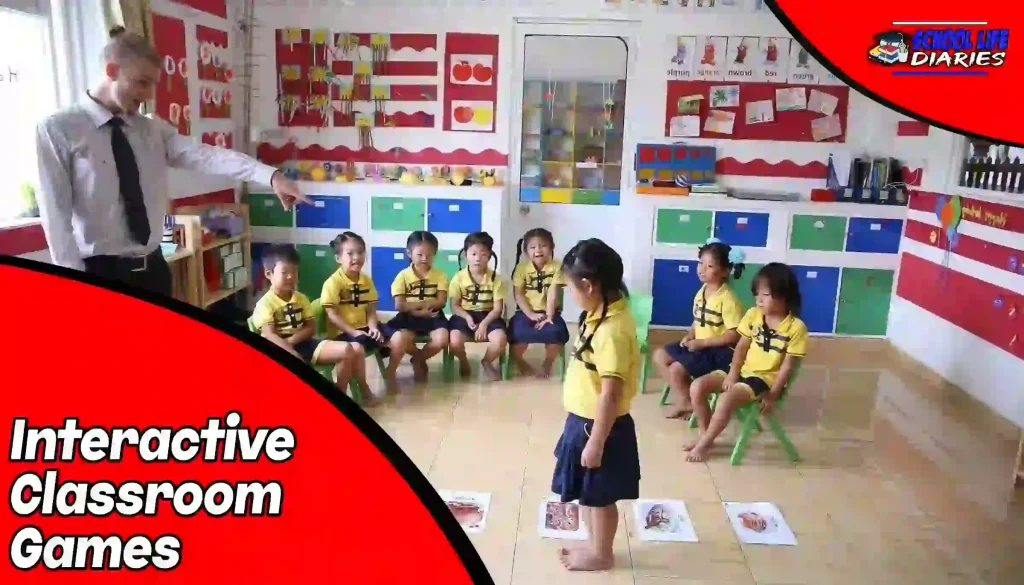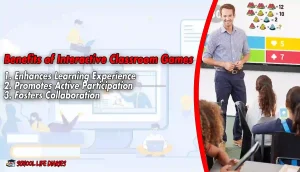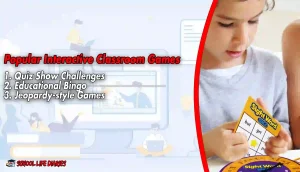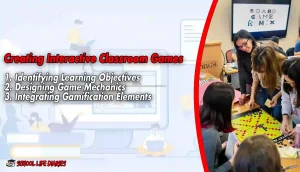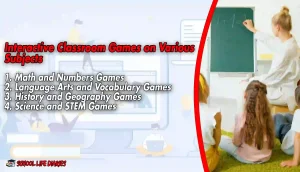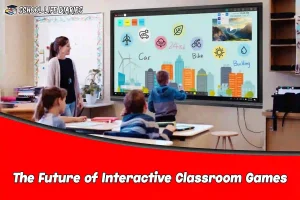In today’s rapidly evolving educational landscape, traditional teaching methods are being complemented by innovative approaches that promote interactive learning. One such method gaining widespread popularity is the integration of interactive classroom games.
These games not only create a fun and engaging learning environment but also stimulate students’ minds, encouraging active participation and collaboration.
This article explores the significance of interactive classroom games and how they contribute to enriching the educational experience.
Benefits of Interactive Classroom Games
1. Enhances Learning Experience
Interactive classroom games offer a dynamic learning experience that goes beyond the confines of textbooks. They provide students with opportunities to apply their knowledge, think critically, and solve problems in real time. As students actively participate in these games, they retain information better, leading to improved academic performance.
2. Promotes Active Participation
Conventional lectures often leave some students disengaged, leading to diminished learning outcomes. However, interactive games encourage all students to participate actively. These games can be tailored to suit different learning styles, ensuring that each student feels included and valued in the learning process.
3. Fosters Collaboration
Collaboration is an essential skill in the modern world. Interactive classroom games promote teamwork and cooperation among students. As they work together to achieve common goals, students learn valuable social skills, such as effective communication, empathy, and problem-solving.
Popular Interactive Classroom Games
1. Quiz Show Challenges
Quiz show-style games are an excellent way to review and reinforce lessons. Teachers can create interactive quizzes with questions related to the topics covered in class. Students can participate individually or in teams, adding an element of excitement and healthy competition.
2. Educational Bingo
Bingo games are not just for leisure; they can be transformed into powerful learning tools. Educational Bingo helps reinforce vocabulary, mathematical concepts, historical events, and more. With customized Bingo cards, teachers can make learning enjoyable while achieving specific educational objectives.
3. Jeopardy-style Games
Inspired by the popular TV game show, Jeopardy-style games are a hit among students. Teachers can design these games to cover various subjects and topics. The format encourages critical thinking, as students must phrase their responses in the form of a question.
Incorporating Technology in Classroom Games
1. Educational Apps and Platforms
The digital age has given rise to a plethora of educational apps and platforms. These apps offer interactive quizzes, puzzles, and games that cater to different subjects and age groups. Integrating these apps into the classroom environment can add an extra layer of engagement and interactivity.
2. Virtual Reality in Education
Virtual reality (VR) technology opens up endless possibilities for immersive learning experiences. With VR headsets, students can explore historical sites, dive into the depths of the ocean, or even travel to outer space. The experiential nature of VR enhances the understanding and retention of complex concepts.
Creating Interactive Classroom Games
1. Identifying Learning Objectives
Before creating interactive games, teachers must identify clear learning objectives. The games should align with the curriculum and target specific educational outcomes. By doing so, educators ensure that the games are not just entertaining but also meaningful and relevant to the student’s academic growth.
2. Designing Game Mechanics
The success of an interactive classroom game depends on its well-designed game mechanics. Educators must strike a balance between challenge and achievability, ensuring that students remain motivated throughout the gameplay. Interactive games should be intuitive, user-friendly, and foster a sense of accomplishment.
3. Integrating Gamification Elements
Gamification elements, such as rewards, badges, and leaderboards, add a layer of excitement to interactive classroom games. By incorporating these elements, educators tap into students’ intrinsic motivation, encouraging them to perform at their best while enjoying the learning process.
Strategies for Successful Implementation
1. Engage Teachers and Students
To maximize the benefits of interactive classroom games, teachers must be actively involved in the process. They can use these games to supplement their lessons, assess students’ progress, and identify areas that require additional attention. Moreover, incorporating student feedback can further improve the gaming experience.
2. Encourage Healthy Competition
Healthy competition can be a powerful tool to drive student engagement and performance. By introducing rewards or recognition for top performers, educators can instill a sense of achievement and encourage students to put in their best effort.
3. Evaluate and Improve Games
Interactive classroom games should be treated as a work in progress. Regular evaluation and feedback from both teachers and students can help identify areas for improvement. Iterative refinements ensure that the games remain effective and align with the evolving needs of the classroom.
Addressing Challenges and Concerns
1. Managing Screen Time
While interactive classroom games enhance learning, educators must strike a balance to prevent excessive screen time. Incorporating a variety of activities, including non-digital ones, can maintain a healthy learning environment.
2. Overcoming Technical Issues
As with any technology-driven initiative, technical challenges may arise. Schools should have contingency plans to address technical glitches promptly, ensuring a seamless learning experience for students.
3. Ensuring Inclusivity
Interactive classroom games should be accessible to all students, including those with disabilities. Educators should consider the diverse needs of their students and create games that are inclusive and accommodating.
Interactive Classroom Games on Various Subjects
1. Math and Numbers Games
Interactive math games can turn abstract concepts into enjoyable challenges. From arithmetic drills to geometry puzzles, these games reinforce mathematical skills and foster a love for numbers.
2. Language Arts and Vocabulary Games
Language arts games nurture language proficiency and creativity. Vocabulary-building games, spelling challenges, and storytelling activities enhance language skills while sparking the imagination.
3. History and Geography Games
History and geography games take students on exciting journeys through time and across the world. These games make historical events and geographical facts come alive, making learning memorable.
4. Science and STEM Games
Science and STEM games allow students to explore scientific phenomena and engage in hands-on experiments. These games ignite curiosity and cultivate a passion for scientific discovery.
The Future of Interactive Classroom Games
As technology continues to advance, so will the potential of interactive classroom games. With ongoing research and innovation, educators can look forward to even more effective and personalized learning experiences for students. Interactive games will likely become an integral part of modern education, enhancing the way knowledge is imparted and absorbed.
FAQs:
1. Are interactive classroom games suitable for all age groups?
Yes, interactive classroom games can be adapted to suit students of all age groups, from elementary to high school. The key is to align the games with the curriculum and learning objectives specific to each age group.
2. Can interactive classroom games replace traditional teaching methods?
While interactive classroom offer many benefits, they should complement rather than replace traditional teaching methods. A balanced approach that combines various instructional techniques will yield the best results.
3. Are there educational apps suitable for interactive classroom games?
Yes, numerous educational apps and platforms are designed explicitly for interactive classroom games. Teachers can explore these apps to find the ones that align with their subject matter and teaching style.
4. How can teachers assess students’ progress through interactive games?
Interactive games often come with built-in tracking and assessment features. Teachers can use these features to monitor students’ performance, identify areas of improvement, and tailor their teaching accordingly.
5. Can interactive classroom games be used in online learning environments?
Absolutely. Interactive classrooms are versatile and can be seamlessly integrated into online learning platforms, making them an excellent tool for both physical and virtual classrooms.
Conclusion:
Interactive classrooms represent a revolutionary shift in education, engaging students like never before. By integrating technology and gamification, educators create dynamic and immersive learning environments that foster curiosity, critical thinking, and collaboration. As we embrace the future of education, the role of interactive classroom games will continue to grow, shaping well-rounded individuals prepared for the challenges of tomorrow.

